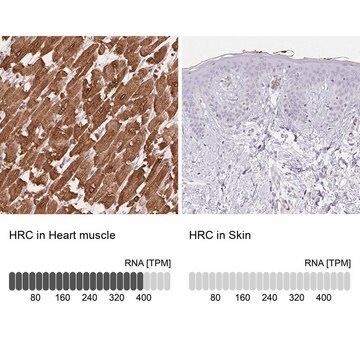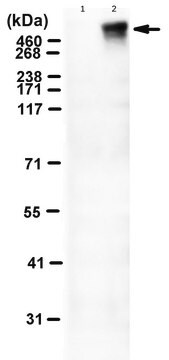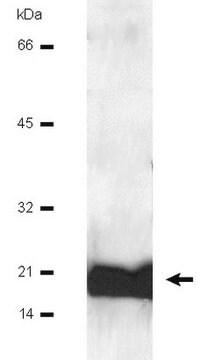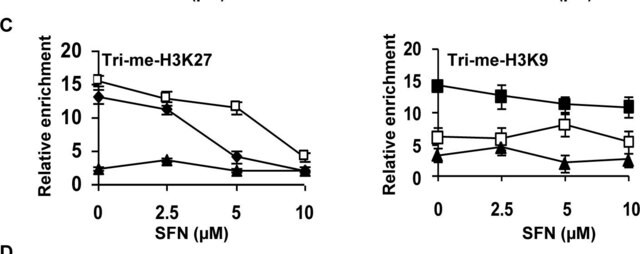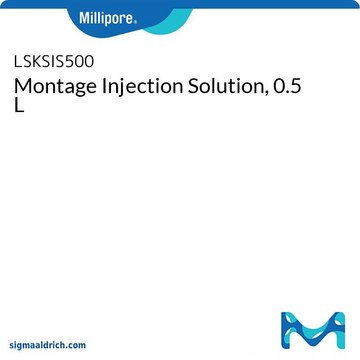07-052
Anti-phospho-Phospholamban (Ser16) Antibody
Upstate®, from rabbit
Synonym(s):
cardiac phospholamban
Sign Into View Organizational & Contract Pricing
Select a Size
All Photos(1)
Select a Size
Change View
About This Item
UNSPSC Code:
12352203
eCl@ss:
32160702
NACRES:
NA.41
Recommended Products
biological source
rabbit
Quality Level
antibody form
affinity purified immunoglobulin
antibody product type
primary antibodies
clone
polyclonal
purified by
affinity chromatography
species reactivity
mouse, canine, rat, rabbit, bovine, pig, human
manufacturer/tradename
Upstate®
technique(s)
western blot: suitable
isotype
IgG
General description
Phospholamban (PLB) is a 52 amino acid phosphoprotein which regulates the calcium pump of cardiac sarcoplasmic reticulum (SR). PLB is an oligomer of five identical subunits each having a cytoplasmic and transmembrane domain. The cytoplasmic domain (residues 1 to 25) contains the phosphorylation sites and is highly basic and readily cleaved by proteases; whereas the transmembrane domain (residues 25 to 52) is mostly hydrophobic, protease resistant and stabilizes the pentamer. Following adrenergic stimulation of cardiac muscle, PLB is phosphorylated at Ser16 and at Thr17 which is correlated with stimulation of calcium transport activity across the SR membrane and relaxation of cardiac fibers.
Specificity
Predicted to cross-react with human, mouse, rat, rabbit, pig and dog.
Recognizes phosphorylated phospho-lamban (Ser16), Mr 5-25 kDa. Additional non-specific bands may be detected, Mr 75 & 100 kDa, in some lysates.
Immunogen
KLH-conjugated, synthetic peptide corresponding to amino acids 14-25 of human cardiac phospholamban (RA[pS]TIEMPQQAR-C) with an added C-terminal cysteine. The immunizing sequence is identical in mouse, rat, rabbit, pig and dog.
Application
Research Category
Metabolism
Signaling
Metabolism
Signaling
Research Sub Category
Muscle Physiology
General Post-translation Modification
Muscle Physiology
General Post-translation Modification
This Anti-phospho-Phospholamban (Ser16) Antibody is validated for use in WB for the detection of phospho-Phospholamban (Ser16).
Quality
Routinely evaluated by western blot on bovine cardiac preparation that was incubated with PKA.
Western Blot Analysis:
0.5-2 µg/mL of this lot detected phosphorylated phospholamban from a bovine cardiac preparation that was incubated with 10 µg PKA (Catalog # 14-114) for 10 minutes.
DO NOT BOIL CARDIAC PREPARATION.
Boiling may reduce the 25 kDa pentamer into tri-, di- or monomers. In addition, phosphorylation may disrupt the pentamer into dimers and monomers.
Western Blot Analysis:
0.5-2 µg/mL of this lot detected phosphorylated phospholamban from a bovine cardiac preparation that was incubated with 10 µg PKA (Catalog # 14-114) for 10 minutes.
DO NOT BOIL CARDIAC PREPARATION.
Boiling may reduce the 25 kDa pentamer into tri-, di- or monomers. In addition, phosphorylation may disrupt the pentamer into dimers and monomers.
Target description
Varies
Physical form
Immunoaffinity Chromatography
Purified rabbit polyclonal IgG in buffer containing 0.014 M phosphate buffer, pH 7.6, 0.175 M NaCl, 0.07% sodium azide and 30% glycerol. Store at -20°C.
Storage and Stability
Stable for 1 year at -20°C from date of receipt.
Handling Recommendations: Upon first thaw, and prior to removing the cap, centrifuge the vial and gently mix the solution. Aliquot into microcentrifuge tubes and store at -20°C. Avoid repeated freeze/thaw cycles, which may damage IgG and affect product performance. Note: Variabillity in freezer temperatures below -20°C may cause glycerol containing solutions to become frozen during storage.
Handling Recommendations: Upon first thaw, and prior to removing the cap, centrifuge the vial and gently mix the solution. Aliquot into microcentrifuge tubes and store at -20°C. Avoid repeated freeze/thaw cycles, which may damage IgG and affect product performance. Note: Variabillity in freezer temperatures below -20°C may cause glycerol containing solutions to become frozen during storage.
Analysis Note
Control
Bovine cardiac preparation, treated with PKA.
Bovine cardiac preparation, treated with PKA.
Other Notes
Concentration: Please refer to the Certificate of Analysis for the lot-specific concentration.
Legal Information
UPSTATE is a registered trademark of Merck KGaA, Darmstadt, Germany
Disclaimer
Unless otherwise stated in our catalog or other company documentation accompanying the product(s), our products are intended for research use only and are not to be used for any other purpose, which includes but is not limited to, unauthorized commercial uses, in vitro diagnostic uses, ex vivo or in vivo therapeutic uses or any type of consumption or application to humans or animals.
Not finding the right product?
Try our Product Selector Tool.
Storage Class Code
10 - Combustible liquids
WGK
WGK 1
Certificates of Analysis (COA)
Search for Certificates of Analysis (COA) by entering the products Lot/Batch Number. Lot and Batch Numbers can be found on a product’s label following the words ‘Lot’ or ‘Batch’.
Already Own This Product?
Find documentation for the products that you have recently purchased in the Document Library.
Single histidine-substituted cardiac troponin I confers protection from age-related systolic and diastolic dysfunction.
Palpant, NJ; Day, SM; Herron, TJ; Converso, KL; Metzger, JM
Cardiovascular Research null
E J Mayer et al.
Biochemical and biophysical research communications, 267(1), 40-48 (2000-01-07)
Quantitative immunoassays to discriminate and quantitate phospholamban and its phosphorylation states in heart homogenates were developed using known amounts of protein determined by amino acid analysis. Synthetic 1-52 phospholamban, the hydrophilic 1-25 peptide, and 1-25 phosphopeptides containing P-Ser(16), P-Thr(17), and
Bat-Erdene Myagmar et al.
Circulation research, 120(7), 1103-1115 (2017-02-22)
It is unknown whether every ventricular myocyte expresses all 5 of the cardiac adrenergic receptors (ARs), β1, β2, β3, α1A, and α1B. The β1 and β2 are thought to be the dominant myocyte ARs. Quantify the 5 cardiac ARs in
Bhavini B Patel et al.
Toxicological sciences : an official journal of the Society of Toxicology, 133(1), 174-185 (2013-02-19)
Bisphenol A (BPA) is an estrogenizing endocrine disruptor compound of concern. Our objective was to test whether lifelong BPA would impact cardiac structure/function, calcium homeostasis protein expression, and the DNA methylation of cardiac genes. We delivered 0.5 and 5.0 µg/kg/day
Protein kinase A type I and type II define distinct intracellular signaling compartments.
Di Benedetto, G; Zoccarato, A; Lissandron, V; Terrin, A; Li, X; Houslay, MD; Baillie, GS; Zaccolo, M
Circulation Research null
Our team of scientists has experience in all areas of research including Life Science, Material Science, Chemical Synthesis, Chromatography, Analytical and many others.
Contact Technical Service